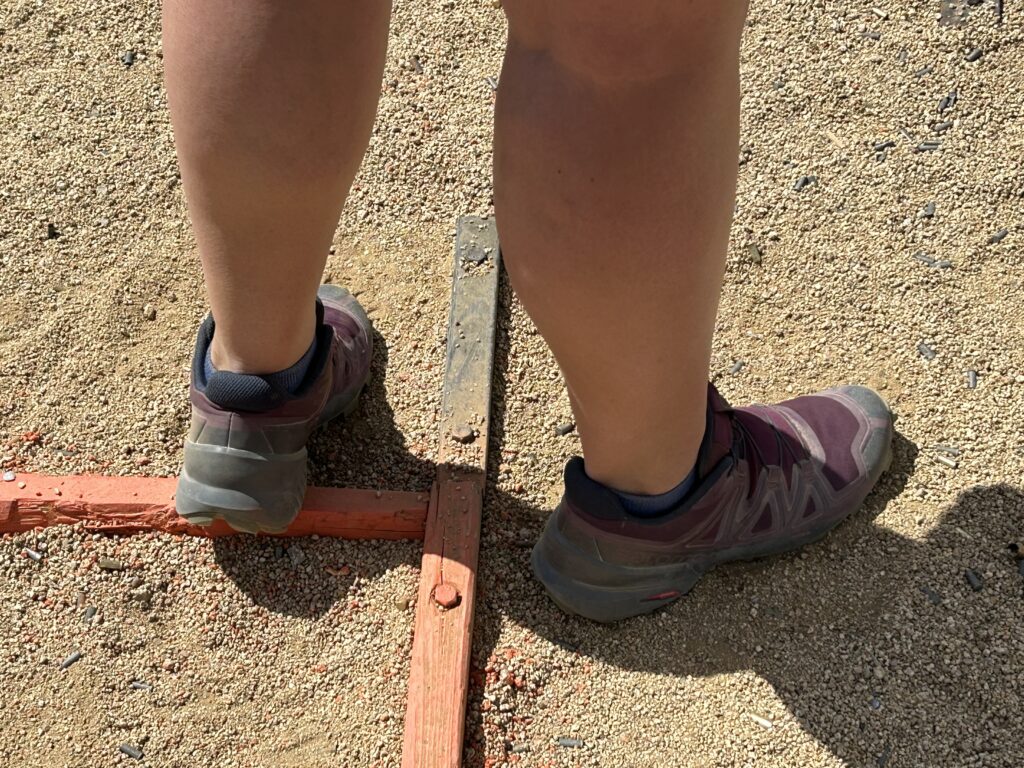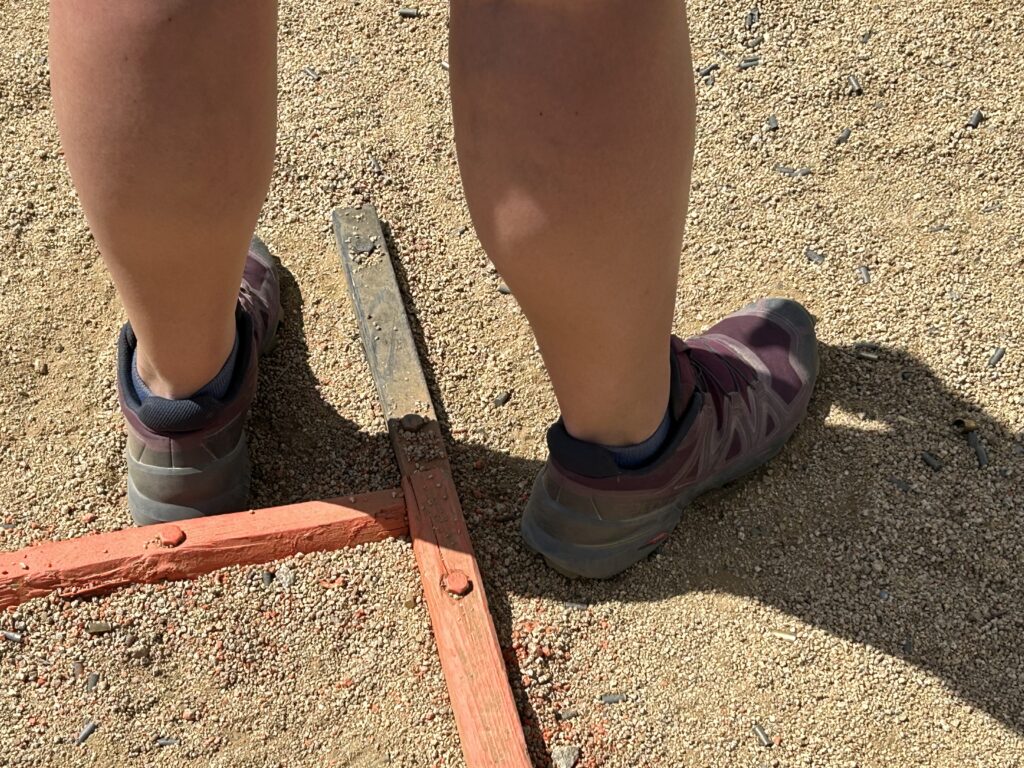Rule 3.2.1 requires that the competitor start position is included in the Written Stage Briefing (WSB) for each stage. We’ve all seen a wide variety of start positions at matches: anywhere inside the shooting area, feet or hands touching a marked location, heels or toes touching the rear fault line, etc. Words matter, of course, and it is important that WSBs are clearly written and that the start position is consistently enforced. This article will discuss one specific nuance of the competitor start location relative to the shooting area.
What do we mean by “inside the shooting area” when it comes to a start position? Our guide for this distinction is the rulebook; the rules may not address this specific item but they can still be used to clarify a start position. Remember that the rulebook applies a procedural penalty when at least one foot is touching the ground outside of the shooting area, and by inference a start position that is “inside the shooting area” requires that neither foot touches the ground outside of the shooting area. Both feet could be touching the range floor inside the shooting area, part of one or both could be staged on top of the fault line as long as it is not also touching the ground outside the shooting area, or a competitor could be doing their flamingo impression with one foot held in the air.
What about a start position that is “outside the shooting area”? Using the same logic above regarding the application of penalties, having one foot inside the shooting area and one out would meet the description of outside the shooting area. If, as a stage designer, you want to have a competitor start with both feet outside of the shooting area, make sure that the WSB is written that way. The start position can be “both feet outside of the shooting area” or “completely outside the shooting area”.
If the start position is “completely outside the shooting area” is it acceptable to start a competitor if they have a heel or a toe on top of the fault line? Remember that the fault line is part of the shooting area, so having a toe or heel on top of the fault line, even if the other part of the foot is touching the ground outside of the shooting area, is not considered “completely outside” and the competitor should not be allowed to start in that position.


There are other potential pitfalls associated with the start position as specified in the WSB. For example, “standing” has a definition in the rules Glossary and must be enforced consistently. A start position that includes “standing” requires that the competitor’s body is fully erect with both feet planted on the ground or other designated position; this means no leaning or crouching at the start signal. Another common start position requires the competitor’s feet to be touching something such as a fault line or marks; does this mean heels or toes? Either? Since both your heels and toes are part of your foot, either toes or heels, or arches or the side of the foot, would comply. If, as a stage designer, you want the competitor to start with his toes touching the marks, make sure that is included in the WSB. The same logic can be applied to a start position requiring hands touching marks. Since his fingers are part of his hand, a competitor can position himself closer to the first target by stretching and touching the marks with only the tips of his fingers. If you want to prohibit a competitor from locating himself closer to a target at the start position, you can also include a location for the feet at the start signal (i.e. “hands touching marks with both feet touching the marked stick” or similar) or say palms touching marks instead of hands.
There is something of an art to writing a WSB that is both easy to understand and consistently enforceable. As a stage designer if there is something specific that you want to see in the start position, make sure that it is included in the WSB. Words have meanings, and it is important to use the correct ones when a specific start is required. Similarly, if you are a stage RO or CRO and have a question about the start position, contact the Range Master for clarification before anyone shoots the stage.